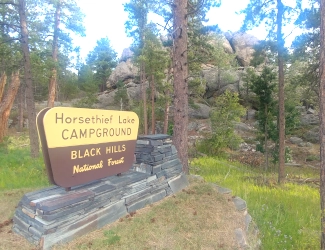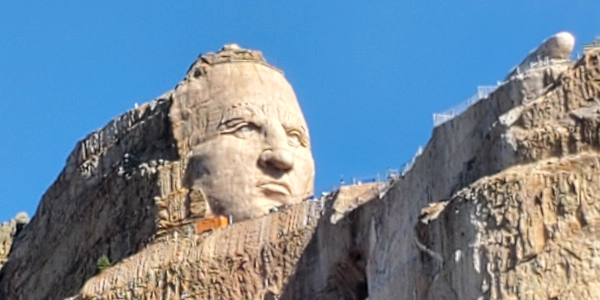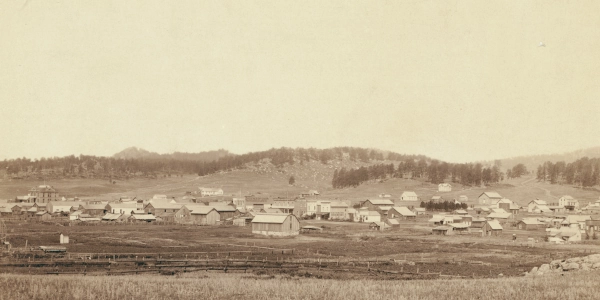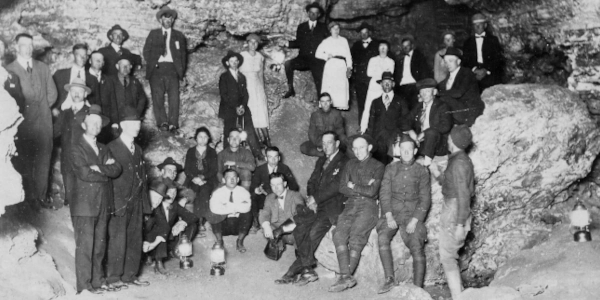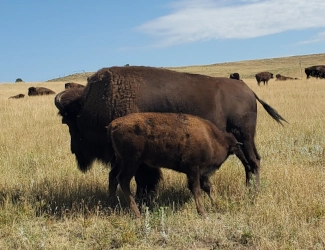
Photo above: Baby bison suckling from its mom (Video) along the road in Custer State Park, 2024. Courtesy America's Best History. Right: Rock formations along Needles Highway in the Black Hills National Forest, 2024. Courtesy America's Best History.
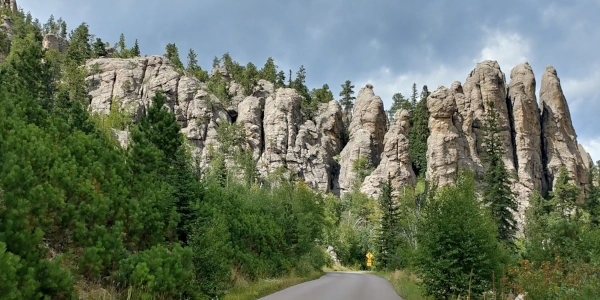
Black Hills, South Dakota
It's so hard to describe the wonderful panoply of things to see and do in the Black Hills of South Dakota, from those into recreation; hiking, climbing, fishing, and camping, to the god made icons of the mountains and spires that rose from the prairie sea that used to cover the land there out to the Badlands that greets the visitor coming from the east, pricipitated by the famous Wall Drug Store of western Americana. Then there's the wildlife, with bison wandering through Custer State Park into the Wind Cave National Park, with prong horn antelope and big horn sheep and wild burros and prairie dogs. Oh, and lest we not forget, the two statues, carvings, and memorials that drive much of the traffic; the spectacular Mount Rushmore, carved by sculptor Gutzon Borglum, his son, and team, to honor four of the greatest Presidents in United States history; George Washington, Thomas Jefferson, Theodore Roosevelt, and Thomas Jefferson. And the other sculpture, the Crazy Horse Memorial, not yet finished, but paying homage to the Native Americans who roamed this landscape for hundreds, maybe thousands of years prior to European encroachment, not to be too harsh. None of that matters once you are here, hearing all of those stories at the attractions which abound, and in the small towns that grow during tourist season, but house a whole lot less people in the winter months.
Click here to Sponsor the page and how to reserve your ad.
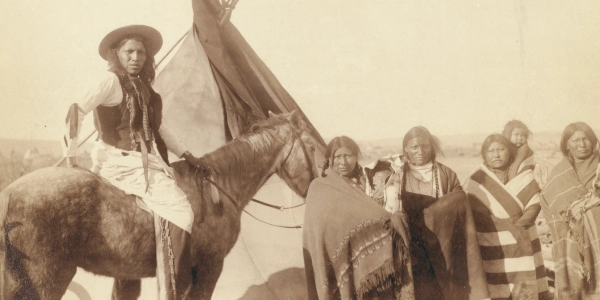
Black Hills Then
The Lakota tribe knew of the importance and existence of the Black Hills, known as Pahá Sápa to them, from their origin story which started at Wind Cave in a Spirit Lodge beneath the earth and extended to include the bison, which defined their existence until virtual extinction. While Native culture reaches back to 11,500 BC and the Clovis culture, more known history began in 1500 AD with the Arikara. The land was also claimed by the Crow, Kiowa, Arapaho, and Cheyenne. When the Lakota moved west from Minnesota, they defeated the Cheyenne in 1776 and became the dominant regional force. However, for the next one hundred or so years, white settlers, starting with Francois and Louis de La V@eacuterendrye in 1743, followed soon by trappers, traders, and eventually more and more Europeans to the Black Hills looking for gold and timber. That clash of cultures did not go well, and eventually led to the reservation of the Native tribes, such as the Pine Ridge Reservation, which includes part of the Badlands to the east of the Black Hills.
Photo above: Lakota family in the Black Hills, 1891, John C.H. Grabill. Courtesy Library of Congress. Below: The spectacular faces of Presidents Washington, Jefferson, Teddy Roosevelt, and Lincoln at Mount Rushmore National Memorial, 2024. Courtesy America's Best History.

Black Hills Now
Although the Black Hills retains much of the historic cultures of the Lakota and of the white European influence that followed, it is now a paradise for tourists looking for nature, beauty, history, and recreation. Dominated by Mount Rushmore, but surrounded by so much more, the nationally recognized caves, Wind Cave and Jewel Cave, plus the largest state park in the nation, Custer State Park, with all that wildlife to marvel upon there and around the entire Black Hills National Forest. Already monumental and partially carved, the Crazy Horse Memorial may only be one third to one half completed, but the interpretation in the Visitor Center and on the tour tells its story through the sculpture commissioned by Chief Henry Standing Bear and his hire of sculptor Korczak Ziolkowski, after witnessing his work at the New York World's Fair of 1939-40. Eventually his family joined in, and is still working toward its completion. Well worth a visit as it moves foward each day. A visitor guide stated it could take as much as thirty more years to finish.
Minute Walk in History
A vacation to the Black Hills in southwest South Dakota is a spectacular combination of awesome natural spires, pinnacles, wildlife, sculpture, and wild west towns. Mount Rushmore. Crazy Horse. Jewel Cave. Wind Cave. Custer State Park. Take a walk with us to see some of the highlights, then check out our specific videos on each. Some done and others still on the way.
T-Shirts and Souvenirs
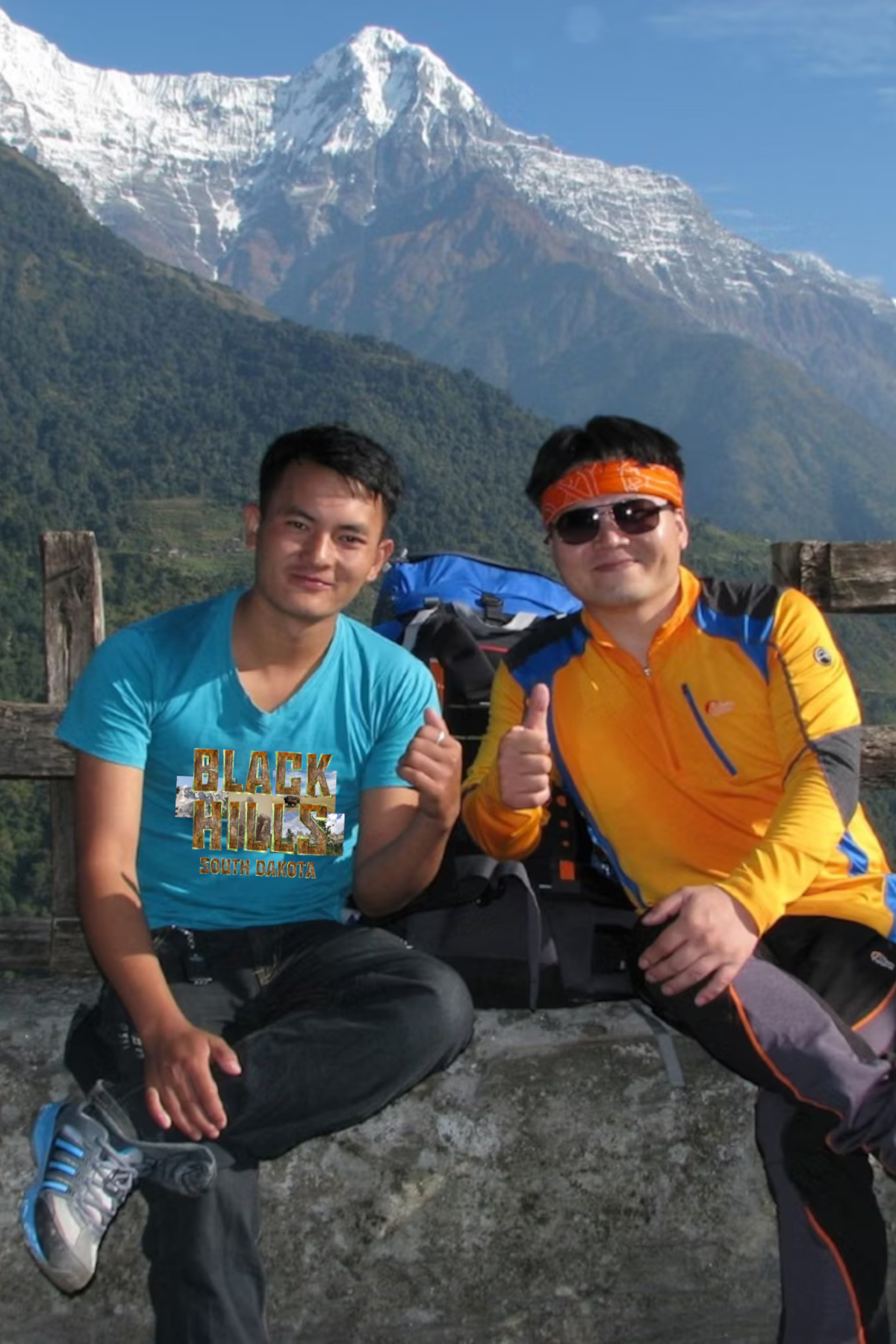
Be ready for your visit to all the sites in the Black Hills of South Dakota with t-shirts, sweatshirts, mug, sticker, and other souvenirs. Great for cavers or Black Hills fans.
Black Hills, South Dakota
Things You Should Not Miss
1. For almost everyone, a visit to the Black Hills will have the primary purpose of visiting Mount Rushmore. From the minute you walk up the Court of Flags from the parking lot, the visage of the four faces of the Presidents hovers over you, even at that distance. There are ranger guides to take you on walks and talks, many along the trail that takes you one third up the mountain for a closer look. There are many stairs on the second half of that journey, as well as the Sculptor's Studio. A film and exhibits are located in the Visitor Center which is below the viewing deck. Reaching out and down from there is the amphitheater that hosts a nightly program of a ranger talk, film, and patriotic lighting of the monumental faces above you. It is wonderful.
2. Don't miss taking a drive. Whether you want to wander around Needles Highway with its towering spires people still try to climb or through Custer State Park to witness wildlife, the closeness of most of the attractions here make it possible for you to cover a lot of ground, and things to do, in a day to five days.
3. Become a spelunker. Depending on whether going underground is your thing or not, the Black Hills include two national park caves (see below) as well as other smaller private caves in the area. They are perfect for a warm day, because they will be sweatshirt cool once on a tour.
4. Don't wait for the Crazy Horse Memorial to be completed, go now. The Visitor Center is one of the best laid out spaces of any we've visited with a central courtyard that has food, a small sculpture of what the finished product will be, as well as Lakota performances of dance and story. And yes, you can get a closer look at the monument through a variety of bus tours that take you nearer to the mountain.
